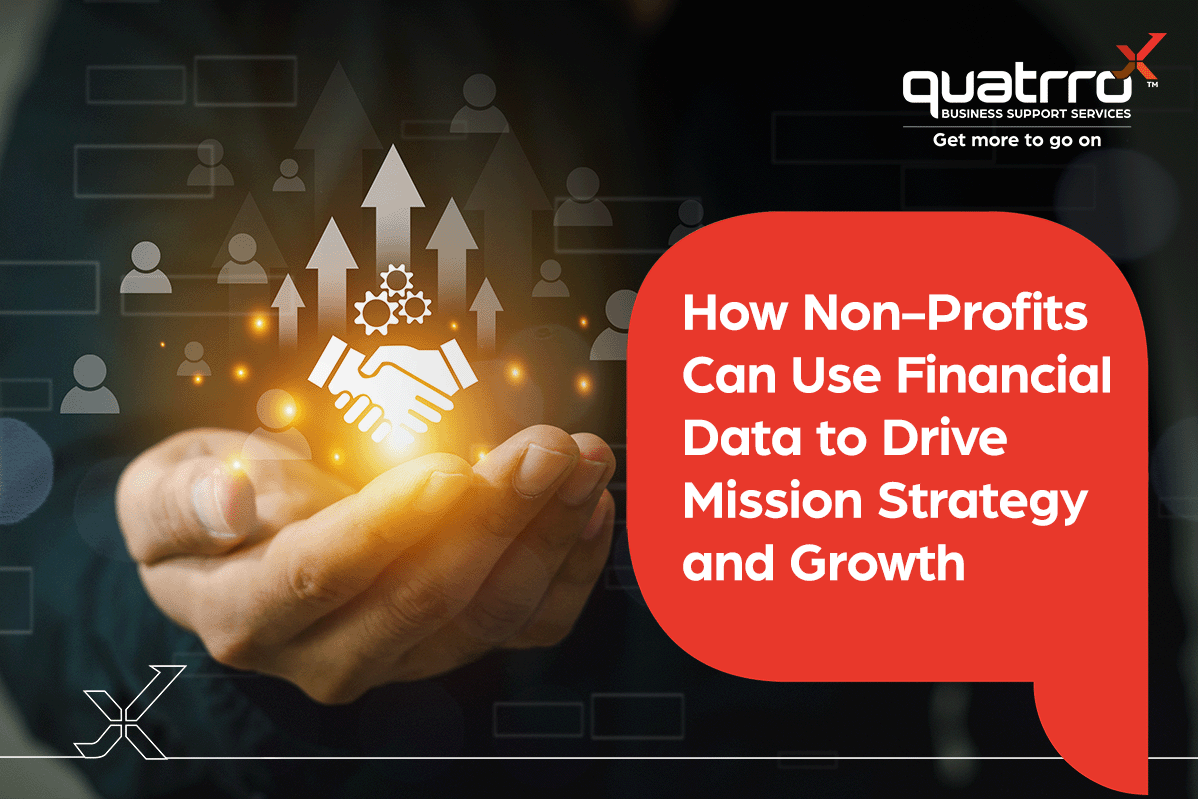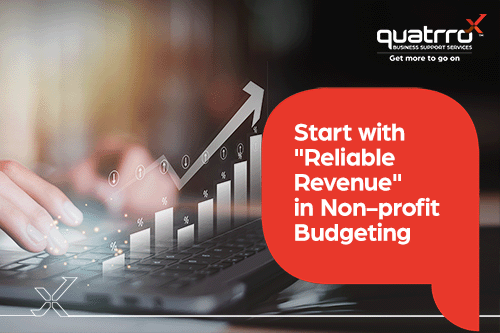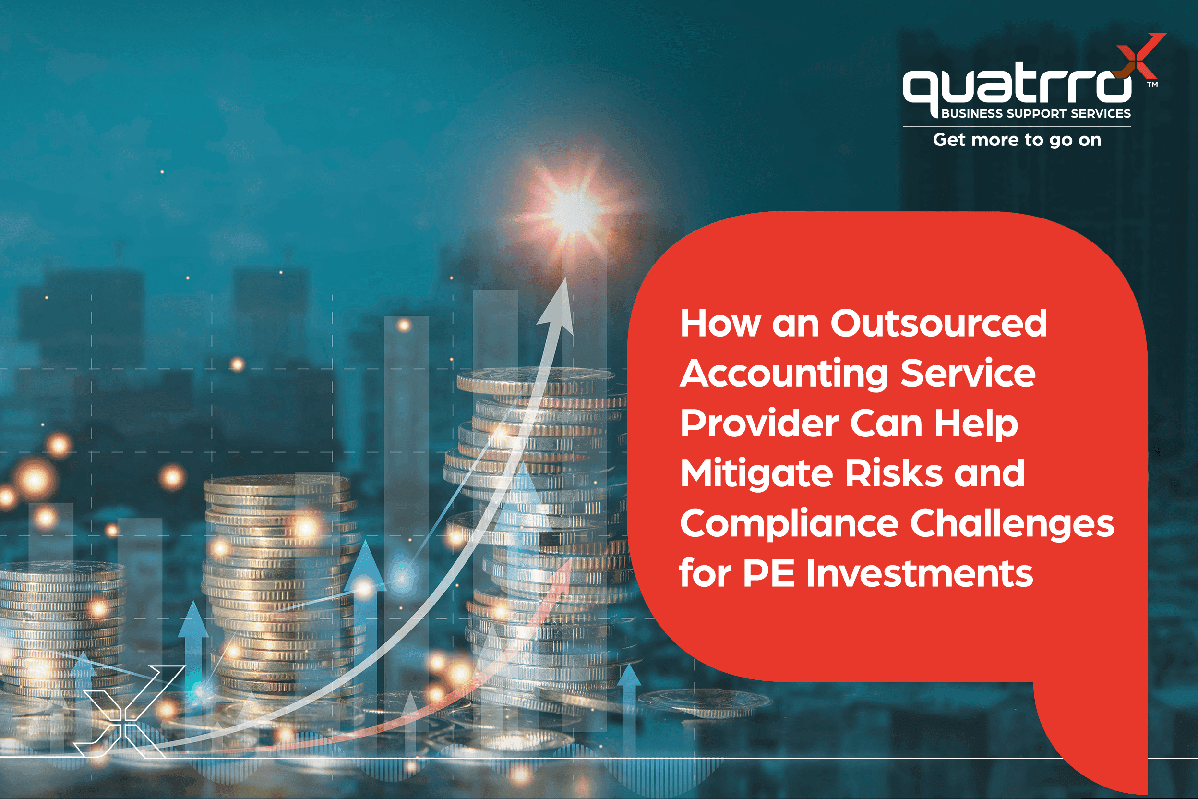Blog Details
How Non-Profits Can Use Financial Data to Drive Mission Strategy and Growth
January 15, 2025

Is your non-profit taking full advantage of data? When surveyed, 90% of non-profits have reported that they collect data, but only 40% currently use that data consistently when making decisions. There are a variety of reasons for why that may be the case many organizations lack the tools to analyze the data they have collected or do not have enough trained personnel to take full advantage of data insights.
If your organization isn’t currently utilizing data properly, it can be a serious disadvantage for long-term planning and fundraising. Here are a few reasons why, and some tips on how to fully integrate data collection and analysis into your organization.
Transparent financial reporting enhances accountability to donors and stakeholders. Donors expect their contributions to be used responsibly, so providing clear financial records builds trust and encourages continued support. Managing financial data well also makes it easier to comply with regulatory requirements.
When you align financial data with the organization’s mission, you ensure that financial decisions will directly support the organization’s goals. By linking spending to mission objectives, non-profits can prioritize activities that advance their cause. By analyzing costs and outcomes, organizations can assess which efforts deliver the best results. Non-profits can use the insights they get from their financial data to plan for the future, set realistic goals, and identify opportunities for growth.
By analyzing the average contribution size over time, organizations can look for trends and tailor their fundraising efforts to encourage higher donations. Monitoring the number of active donors helps non-profits see the real size and engagement level of their donor base. Donor retention and attrition rates indicate how well the organization maintains relationships with its supporters. If organizations see a spike in attrition rates, it might mean marketing or outreach efforts are necessary to keep donors involved and interested.
Major gift contributions are also key data points for fundraising. Tracking these large donations allows organizations to recognize and cultivate relationships with key supporters.
In addition to financial data, non-profits should measure fundraising campaign performance indicators to see where their strategies are succeeding or failing. Metrics such as response rates, website traffic rates, email open rates, bounce rates and conversion rates can give insights for optimizing performance and fundraising.
Non-profits can utilize specialized tools to provide dashboards to present reporting of key financial metrics to leadership and board members. When financial data is centralized, stakeholders are able to access reports with one click and immediately get a real-time understanding of the organization’s financial health.
Create clear procedures for staff to follow, and regularly update and maintain your databases to keep information current. Consistent data collection practices improve the reliability of your data analysis.
Make sure you are keeping your data secure and in compliance with all regulatory requirements. It’s important to protect sensitive information such as donor details and financial records. Data security measures like encryption and access controls can help with this.
You should also regularly audit your data for accuracy and completeness. Clean your databases by removing duplicates and correcting errors. Data management policies and procedures should be clearly communicated so that the organization can maintain consistency and accountability.
Then, use the insights gained from your data to inform decision-making. Tailor fundraising strategies to the donor preferences you’ve identified through data. Decide which programs to expand, modify, or discontinue by assessing their cost-effectiveness and impact. Data-driven decisions help ensure that your actions support your mission and make the best use of resources.
External experts can provide valuable insights into leveraging data to optimize financial strategies and ensure compliance. They can help set up systems appropriately, train staff, or offer ongoing support. Leveraging outside expertise can accelerate your organization’s ability to use data effectively.
If your organization isn’t currently utilizing data properly, it can be a serious disadvantage for long-term planning and fundraising. Here are a few reasons why, and some tips on how to fully integrate data collection and analysis into your organization.
Why Data Matters For Non-Profits
Taking advantage of financial data can enable non-profits to grow and focus on achieving outlined goals. It also helps build better relationships with donors.Transparent financial reporting enhances accountability to donors and stakeholders. Donors expect their contributions to be used responsibly, so providing clear financial records builds trust and encourages continued support. Managing financial data well also makes it easier to comply with regulatory requirements.
When you align financial data with the organization’s mission, you ensure that financial decisions will directly support the organization’s goals. By linking spending to mission objectives, non-profits can prioritize activities that advance their cause. By analyzing costs and outcomes, organizations can assess which efforts deliver the best results. Non-profits can use the insights they get from their financial data to plan for the future, set realistic goals, and identify opportunities for growth.
Key Types of Financial Data For Non-Profits
Fundraising Metrics
Total annual fundraising revenue helps non-profits understand their overall financial performance, but there are many other fundraising metrics that can help organizations plan and budget. Non-profits should also track average donation amounts, the number of active donors, and donor retention and attrition rates.By analyzing the average contribution size over time, organizations can look for trends and tailor their fundraising efforts to encourage higher donations. Monitoring the number of active donors helps non-profits see the real size and engagement level of their donor base. Donor retention and attrition rates indicate how well the organization maintains relationships with its supporters. If organizations see a spike in attrition rates, it might mean marketing or outreach efforts are necessary to keep donors involved and interested.
Major gift contributions are also key data points for fundraising. Tracking these large donations allows organizations to recognize and cultivate relationships with key supporters.
In addition to financial data, non-profits should measure fundraising campaign performance indicators to see where their strategies are succeeding or failing. Metrics such as response rates, website traffic rates, email open rates, bounce rates and conversion rates can give insights for optimizing performance and fundraising.
Program Financial Metrics
Program-specific expenses and budgets help non-profits manage each initiative effectively. Tracking these figures properly keeps programs operating within their financial budgets and helps identify areas where costs can be reduced or resources reallocated. Calculating the cost per beneficiary or service delivered provides non-profits with a concrete way to measure how efficient their programs are.Restricted Funds and Grants
Non-profits should also have clear systems in place to manage restricted funds. Systems that allow tracking of these funds help organizations plan expenditures appropriately. Since many grants come with specific conditions on how the money can be used, non-profits will also need to track how grant funds are spent and be prepared to provide detailed reports to funders.Operational Financial Metrics
Administrative and overhead costs represent expenses that support the organization’s operations but are not tied to specific programs. These include expenses like rent, utilities, and administrative salaries. Keeping these costs in check ensures that more funds are available for program activities.Non-profits can utilize specialized tools to provide dashboards to present reporting of key financial metrics to leadership and board members. When financial data is centralized, stakeholders are able to access reports with one click and immediately get a real-time understanding of the organization’s financial health.
How Your Non-Profit Can Use Data Better
1. Assess Your Current Data Practices
Look at the types of data you gather, such as financial records, donor information, and program outcomes. Identify any gaps or inconsistencies in your data collection methods is the data you have accurate, up-to-date, and stored securely? Are there any areas where you are gathering but not utilizing or analyzing data that you should be?2. Set Clear Goals for Data Use
Define what you want to achieve with your data, based on your mission and organizational objectives. Decide which key metrics matter most to your operations and goals, such as donor retention rates or program cost-effectiveness. Then you can establish measurable targets to track progress over time. Having clear goals helps focus your data efforts on what will make the most impact.3. Invest in the Right Tools and Technology
Accounting and financial management systems designed for non-profits can handle non-profit-specific budgeting, reporting, and compliance. Use management software to track contributions, donor engagement, and campaign performance. Take advantage of data analytics tools that help interpret and visualize your data. Consider that this does not necessarily mean having to invest money in new technology, but it could also just mean further optimizing your use of an existing platform or tool.4. Develop Structured Data Collection Processes
It is important to standardize how data is collected across your organization. Manual data entry can be time-consuming and prone to errors, so automating data entry can lead to significant advantages.Create clear procedures for staff to follow, and regularly update and maintain your databases to keep information current. Consistent data collection practices improve the reliability of your data analysis.
Make sure you are keeping your data secure and in compliance with all regulatory requirements. It’s important to protect sensitive information such as donor details and financial records. Data security measures like encryption and access controls can help with this.
You should also regularly audit your data for accuracy and completeness. Clean your databases by removing duplicates and correcting errors. Data management policies and procedures should be clearly communicated so that the organization can maintain consistency and accountability.
5. Apply Data to Drive Strategic Decisions
Effective data analysis turns raw numbers into actionable insights. Use your data analytics tools to monitor key performance indicators. You can regularly review important metrics like total fundraising revenue, average donation amounts, and program expenses. You can also evaluate the effectiveness of individual programs by comparing costs to outcomes. Use dashboards and reports to visualize trends and patterns across the data.Then, use the insights gained from your data to inform decision-making. Tailor fundraising strategies to the donor preferences you’ve identified through data. Decide which programs to expand, modify, or discontinue by assessing their cost-effectiveness and impact. Data-driven decisions help ensure that your actions support your mission and make the best use of resources.
6. Foster a Data-Driven Culture
It will be important that you provide training on data literacy and analysis to build confidence and skills among staff. Leadership should champion the use of data, setting an example for all team members across the organization. A culture that values data leads to continuous learning and improvement.External experts can provide valuable insights into leveraging data to optimize financial strategies and ensure compliance. They can help set up systems appropriately, train staff, or offer ongoing support. Leveraging outside expertise can accelerate your organization’s ability to use data effectively.
The Right Partner For Your Non-Profit
At Quatrro Business Support Services (Quatrro), we understand the unique challenges non-profits face. Our team of non-profit experts provides accounting and financial solutions specifically for non-profits, helping you manage and leverage your financial data to support your mission. With our 25+ years of expertise, you can streamline accounting processes, ensure accuracy and compliance, and enable your team to make data-driven decisions that support your mission. Reach out today to see how Quatrro can help you achieve your goals!Latest Insights
Related Blogs
Contact Us








